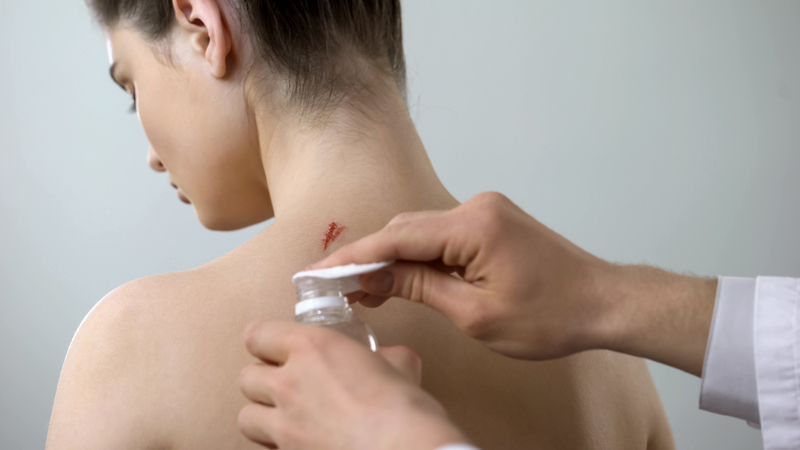How to Clean, Treat, and Cover Minor Wounds
Knowing how to properly clean, treat, and cover minor wounds when the moment calls for it can mean the difference between a prompt return to whatever you were engaged in before hurting yourself and a trip to the doctor or hospital. It can also mean the difference between a wound that heals quickly and one that develops an infection. Having the right first aid products on hand in a well assembled first aid kit that includes sterile compresses, stop bleeding powders, antiseptics, topical antibiotics, and a basic knowledge of how to use them, will prepare you for those unexpected but inevitable accidents.
For the purposes of this article, minor wounds are defined as small cuts, scrapes, abrasions, and minor contusions.

Clean the wound
Before cleaning any wound, you should always thoroughly wash your hands and put on a pair of medical grade gloves. Minor wounds with minimal bleeding should be cleaned with an antiseptic spray or wipe (the preferred method) to prevent bacteria, dirt and other material from contaminating the wound and causing an infection. The antiseptic should contain Benzalkonium Chloride (also known as BZK) as the active ingredient. A good alternative to BZK is hydrogen peroxide, which is also a very effective antiseptic. You could also use a sterile flushing solution such as Nurse Assist or sterile eyewash to clean the wound. By the way, never apply Isopropyl rubbing alcohol products directly on any wound.
Treat the wound
Once you have the wound cleaned up, apply a small amount of antibiotic ointment. This will ensure that any residual contamination or bacteria are dealt with and support the healing process. Use a generic triple antibiotic ointment or a brand name such as Neosporin.
Cover the wound
After the antibiotic ointment is applied, cover the wound with a sterile adhesive dressing or improvise one with sterile gauze or non-stick pads and adhesive tape. Most of these types of wounds can be handled with a regular strip adhesive bandage but there are many other sizes and shapes to choose from including fingertip, knuckle, and patch bandages.
Let the wound heal
Once the wound has been cleaned and dressed, expect the wound to heal in 7-14 days, depending on its severity and depth.
If the wound is serious, first stop the bleeding
Any wound producing a significant amount of bloodflow which cannot be slowed or stopped requires medical attention asap. Additionally, a deep wound may contain foreign objects and debris which can cause more damage or infect the wound so it must be cared for by a medical professional.
If the wound is more serious than the kinds mentioned above and is producing significant bloodflow, the very first rule is to stop the bleeding. There are four established methods that can be used to control bleeding:
- Apply direct pressure to the wound, usually with your hand. When possible, it’s best to have something absorbent (like sterile gauze) between your hand and the wound.
- Elevate the wounded area above the heart. This slows the bloodflow.
- The pressure point method: See any good first aid manual for an illustration of pressure point locations in the body.
- Apply a tourniquet above the wound (this is a method of last resort for extremely serious bleeding).
Outside of the established methods mentioned above, new technology has given us a number of highly effective stop bleeding products. There are several different approaches to this technology but they all have one element in common: hemostasis, “the stopping of the flow of blood.” This is accomplished by speeding up the natural clotting process that occurs in the body when injured. These products include Hemostatic Gauze by Blood Stop, Wound Seal topical stop bleeding powder and Celox Hemostatic gauze or granules.
